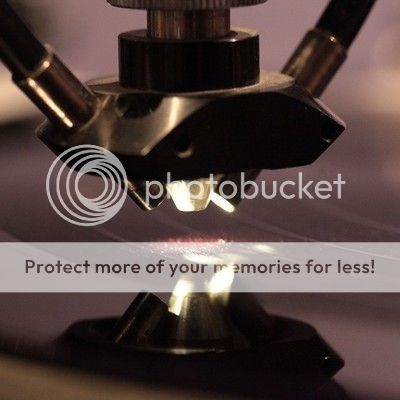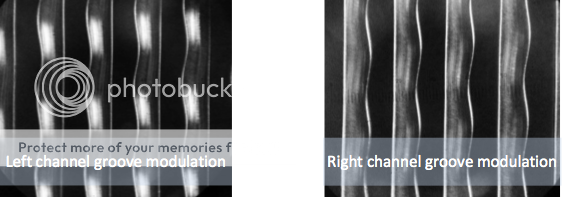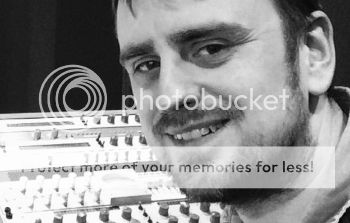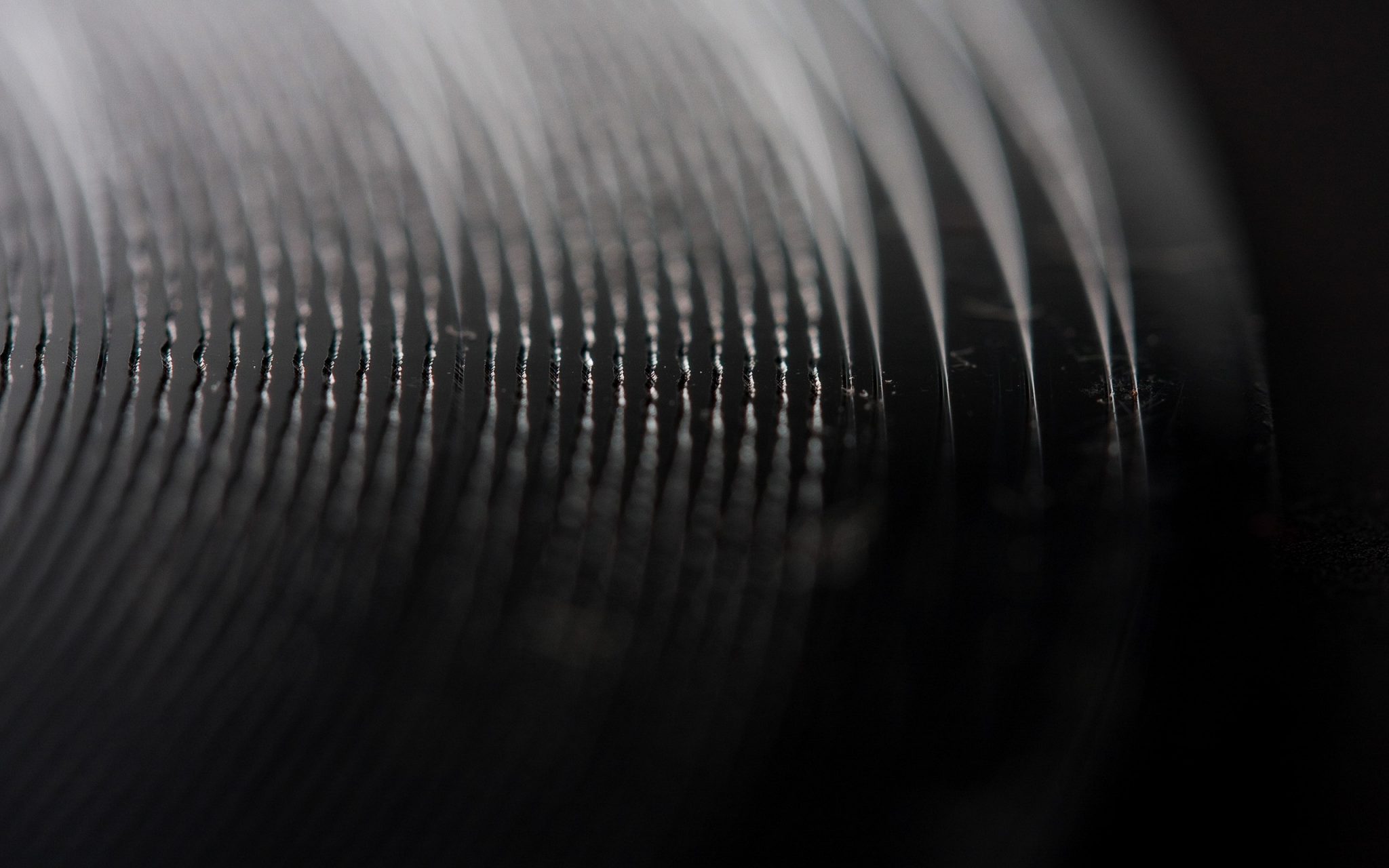Mastering For Vinyl
The Vinyl Comeback
There seems to be no end in sight for the resurgence of vinyl records. In 2015 the UK’s first Official Vinyl Albums and Official Vinyl Singles chart were established plus record players were among one of this years must have Christmas items, although obviously outshone by the Star Wars remote BB8 robot.In some respects it’s like a new format, embraced by the next
generation of end user and selling in significant units. So it’s logical that labels and independent artists require vinyl releases but perhaps know little about how to adapt from the digital formats they’re used to. People either don’t know or have forgotten how to quality control their vinyl releases and I aim to offer some insight and guidance.

How Vinyl Records Are Mastered
We cut vinyl masters onto 14 inch discs covered in soft nitro cellulous lacquer and use a Neumann VMS-80 cutting lathe, SAL74 cutting amps and an SX74 cutting head to inscribe music from a playback source: usually from analogue tape or an appropriate digital file . The VMS-80 was one of the last lathes designed and built in the early 80’s as the technology ironically became redundant in the era of CD manufacturing.
Sources may already be appropriately mastered for the format (referred to as a flat cut from an EQ production master) or require pre-mastering. It’s important to note that CD/Download masters often don’t translate well onto vinyl, even though these days we’re often faced with this prospect sadly. We often prefer to cut from analogue tapes especially with re-issue work, however this isn’t always possible due to the condition of the archive or the quality of new tape stock (an entirely different discussion). If you’ve mixed down to two track tape it’s worth considering keeping your material in the analogue domain for a vinyl cut. A correctly sequenced/equalised copy will have to be produced by the mastering engineer.
Audio is fed to the cutting amplifiers driving the coils in the cutter head, which in turn press onto a sapphire cutting stylus that forms the groove on the disc. The reverse is then applied in form of a playback stylus and a cartridge which transduces the coil or magnet excursions back into voltage and making its way to your speakers. The carriage containing the cutter head moves across the disc making a non-concentric spiral from the moment you drop the needle to the moment it circles the inner label.
For stereo records two coils are used, one for each channel (500 watts per channel) which are set adjacent to each other at 45 degree angles. The photos below are of a cut groove 25x magnified and demonstrate the result from left & right channels modulations.

If cutting a mono (sum) signal the coils move in turn and cause the styli to move laterally. When cutting out of phase (difference) information the coils move together in a vertical movement. The photos below demonstrating how this would look on a groove

Therefore the signal and the groove is an analogue of the original audio however you’re limited to how much music can fit onto a side of vinyl (see recommended durations below). Program loudness alone doesn’t define how much space the grooves take up on the disk, other elements of the signal need to be considered – how loud, how soft, how much bass and how much stereo all effect duration.
That’s basically it, nothing fancy or highly advanced. Disc recording is essentially the same technology that has existed since the dawn of sound recording and it can; when done with care sound pretty great (cue ‘which is better’ arguments in comments). However the quality of the mastering is equally as important as the quality of the pressing, unlike CD manufacture where the bits you put in ‘should’ be the bits you get out. Vinyl processing at pressing plants will change or degrade what the mastering/cutting engineer supplies, why do you think they invented the CD in the first place? The art and science of vinyl pressing is largely about damage control but then isn’t to some extent all forms of sound recording and reproduction?
Preparing Mixes for Vinyl Cutting & Mastering
Ensure that your source audio isn’t too soft, over compressed or dark. We can help combat this in mastering but it’s always best to tackle these issues at the earliest stage.
Be mindful of stereo components which contain significant low frequencies, playing back a groove with strong vertical modulation (stylus movement for difference/stereo signals) can make the record skip. As a rule of thumb if your mix is around 45 degree on a phase correlation meter then you should be fine. You’ll find these types of meters in most DAWs.
Make sure you control high frequencies well, especially vocal sibilance. Again we can help with this but our options are limited with extreme cases. Groove geometry changes towards the inner diameter of a record and the playback stylus can be psychically the wrong shape/size to track high frequencies, the result is undesirable distortion.
Be clear on side splits, playback speed (33 1/3rpm or 45rpm) and record size (7/10/12 inch) when ordering and always have your pressing plant ready to receive your lacquers. The length per side is also a major limiting factor especially in regards to level e.g. A 12 inch single will usually sound louder than an album.
Recommended Durations
Single LP = 23 min a side max
12inch EP/Single/Double LP = 15 mins a side max (33/3 rpm) 12mins per side (45rpm)
7inch Single = 4 mins a side max
10inch EP/Single = 12mins per side (33/3 rpm) 8mins per side (45rpm)
Checking Vinyl Test Pressings
Unless you attend the cutting session or order acetates (reference copies made at the mastering stage) the first time you’ll hear your record will be the test pressings you receive
back from the factory. These vinyl pressings are the first generated from the metal stampers
created from the master lacquers we produce and must be checked before ordering a run.
Clients should listen for the following:
High Frequency Loss: There may be some that is unavoidable due to the aforementioned
geometrical changes and we will avoid cutting too far into the middle ‘if possible’ to help
combat this. If a test pressing experiences a roll off throughout it’s a likely pressing fault,
possibly due to inadequate ‘de-horning’ which is a polishing process used to remove raised edges created from the walls of the cut grooves.
Jumping: The factory should spot these issues but be mindful that a jump could be down to your turntable setup. Be sure to check your test disc on more than one system and if you’re a
new owner of a turntable learn a little about how to correctly balance and setup your tonearm.
High Increase in background noise: Surface noise is produced by the friction of the stylus
and caused by static charge, dust, or irregularities on the surface of a record. Often you’ll
hear clicks so check if clicks are repeatable and note their position/time. Often there’re more
repeatable clicks at the test pressing stage then you’d expect from a final run. This is due to
the pressed plastic not filling the grooves of the processed metal work correctly. A test
pressing is often produced at the factory on separate machines in order for the main presses to be constantly in production and tend to have a lower tolerance for these issues.
Noise can also be born at the cutting stage, a reference acetate would help confirm this as would any greying on either disc. Noise is unavoidable with vinyl and relative to the recorded level (signal to noise). Noise is more noticeable with sparse and very dynamic musical content e.g. a thrashing rock track is more likely to mask noise than a classical piano
recording.
If you are unsure or have a query, get your mastering engineer to evaluate the test pressing with you.
——–

John Webber is a mastering engineer at AIR Studios in London, established by Beatles Producer George Martin. He offers mastering for CD, high resolution audio, MFiT,
Download and vinyl. He has cut vinyl records for a diverse range of artists including
Ghostface Killah, Super Furry Animals & John Coltrane. Other recent mastering credits
includes work for A R Rahmen, Clean Bandit & George Michael. He is also the first cutting
engineer to record directly to vinyl (direct to disc) live from AIR Studios 1.
Julian Ludwig é diretor do Pro Áudio Clube, produtora de áudio Jacarandá, Loc On Demand e Jacarandá Licensing. Trabalhou para empresas como: Guaraná Antartica, TV Gazeta, NET, Chivas Regal, FNAC, Prefeitura de São Paulo, Mukeca Filmes, Agência LEW’LARA TBWA, Agencia MPM, Agência Content House entre outras. Fez trilhas para programas de TV como: Internet-se (Rede TV), Você Bonita (TV Gazeta), Mix Mulher (TV Gazeta), Os Impedidos (TV Gazeta), Estação Pet (TV Gazeta), CQC (TV Band) Vinheta Oficial TV Gazeta, entre outras. Também atuou em vários longas e curtas metragens, incluindo mixagem em 5.1 e serviços de pós-produção.

